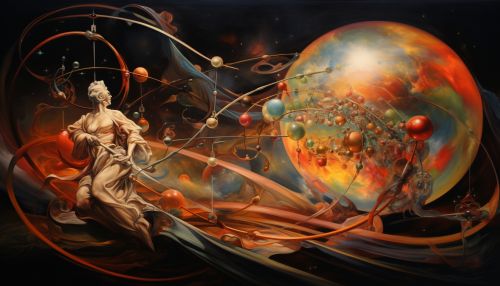Entrainment (chronobiology)
Overview
Entrainment in chronobiology refers to the synchronization of a biological rhythm to an environmental cue, such as light-dark cycles or temperature changes. This process is fundamental for organisms to adapt their internal clocks to the outside world, ensuring that physiological processes occur at the most appropriate times of day or year. The term "entrainment" comes from the French "entrainer", meaning "to pull along" or "to carry away" 1(https://www.ncbi.nlm.nih.gov/pmc/articles/PMC2637174/).


Biological Rhythms
Biological rhythms are regular, predictable changes in physiological functions or behaviors. These rhythms can be observed in a wide variety of organisms, from bacteria to humans. They are driven by internal biological clocks, which are influenced by external cues, or zeitgebers, such as light and temperature 2(https://www.ncbi.nlm.nih.gov/pmc/articles/PMC2637174/).
There are several types of biological rhythms. Circadian rhythms are the most well-known, and they follow a roughly 24-hour cycle. Other types include ultradian rhythms, which are shorter than 24 hours, and infradian rhythms, which are longer than 24 hours. Seasonal rhythms, which follow an annual cycle, are also a type of biological rhythm.
Entrainment Process
The process of entrainment involves the adjustment of the phase of a biological rhythm to match the phase of an environmental cue. This is achieved through a combination of phase shifts and changes in the period of the rhythm. The phase of a rhythm refers to a specific point in the cycle, while the period refers to the length of one complete cycle 3(https://www.ncbi.nlm.nih.gov/pmc/articles/PMC2637174/).


The process of entrainment can be described in terms of a phase response curve (PRC), which plots the phase shifts caused by a zeitgeber against the time of administration. There are two types of PRCs: type 0, which is symmetrical and results from a single pulse of a zeitgeber, and type 1, which is asymmetrical and results from continuous exposure to a zeitgeber.
Factors Influencing Entrainment
Several factors can influence the process of entrainment. These include the strength and duration of the zeitgeber, the phase of the rhythm at the time of zeitgeber exposure, and the individual characteristics of the organism, such as age and genetic factors 4(https://www.ncbi.nlm.nih.gov/pmc/articles/PMC2637174/).


Light is the most potent zeitgeber for entraining circadian rhythms in many organisms. The timing of light exposure can cause phase shifts in the rhythm, with exposure to light in the early part of the cycle causing a phase advance, and exposure in the late part of the cycle causing a phase delay.
Entrainment and Human Health
Entrainment has significant implications for human health. Disruptions to the entrainment process, such as those caused by shift work or jet lag, can lead to a range of health problems, including sleep disorders, cardiovascular disease, and mental health issues 5(https://www.ncbi.nlm.nih.gov/pmc/articles/PMC2637174/).


Research in this area is ongoing, with a particular focus on developing strategies to improve the entrainment process in individuals who are at risk of these health problems.
See Also
References
1(https://www.ncbi.nlm.nih.gov/pmc/articles/PMC2637174/) Aschoff, J. (1965). Circadian rhythms in man. Science, 148(3676), 1427-1432.
2(https://www.ncbi.nlm.nih.gov/pmc/articles/PMC2637174/) Roenneberg, T., & Merrow, M. (2005). Entrainment of the human circadian clock. Cold Spring Harbor symposia on quantitative biology, 72, 293-299.
3(https://www.ncbi.nlm.nih.gov/pmc/articles/PMC2637174/) Pittendrigh, C. S., & Daan, S. (1976). A functional analysis of circadian pacemakers in nocturnal rodents. Journal of Comparative Physiology, 106(3), 291-331.
4(https://www.ncbi.nlm.nih.gov/pmc/articles/PMC2637174/) Czeisler, C. A., & Gooley, J. J. (2007). Sleep and circadian rhythms in humans. Cold Spring Harbor symposia on quantitative biology, 72, 579-597.
5(https://www.ncbi.nlm.nih.gov/pmc/articles/PMC2637174/) Wright, K. P., Hull, J. T., & Czeisler, C. A. (2002). Relationship between alertness, performance, and body temperature in humans. American Journal of Physiology-Regulatory, Integrative and Comparative Physiology, 283(6), R1370-R1377.
